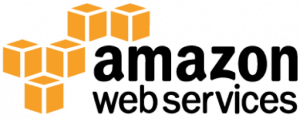This blog post is an excerpt from GovLoop’s recent guide, “The Internet of Things: Challenges and Opportunities for Government.”
By now, most public sector employees are aware of the capabilities that the Internet of Things can provide government. IoT technology can help with everything from transportation, to real time and predictive analytics, to energy efficiency, and much more.
But the rapid growth of IoT in and of itself can pose a problem even as it is helping solve critical issues. In fact, IoT is growing at a very rapid pace, with some estimates saying over 50 billion things will be connected by 2020.
So how can IoT scale properly in government? GovLoop sat down with Sri Elaprolu, Senior Manager and Global Lead for AWS Public Sector IoT Practice, to find out why cloud technology will be the backbone infrastructure for IoT solutions of the future.
“The reality is that more devices are coming online, which means more data is going to be collected and needs to be stored, processed, and analyzed in some way,” Elaprolu explained. “This translates to an increased volume and pace at which data is going to be collected. And trying to do this on premise is going to be near impossible, from a capacity perspective as well as cost.”
This is where cloud technology comes in from four important aspects of supporting and expanding the Internet of Things: storage, agility, cost and security.
As Elaprolu noted, scaling IoT will first require the storage that only cloud can provide. Cloud providers have made storage and compute virtually limitless with on-demand, scalable infrastructure that meets the demands of big data manipulation.
The second way cloud helps scale IoT, said Elaprolu, is agility. “IoT is a fast-moving field,” he noted. “Innovation is happening in almost real time which means experimentation is absolutely key for an agency so that they’re not locked into something. Cloud is an ideal platform for easy experimentation without committing resources for the long run.”
But experimentation and agility cannot happen if the costs of doing so are prohibitive. Fortunately, cloud technology can be paid for only as much as it is used, allowing government to experiment with IoT solutions. Once again, this allows government agencies to scale and grow IoT.
Finally, government agencies should incorporate security into all layers of their IoT solutions: device identity and authorization, security of data in-transit and at-rest, and security within edge processing. Without proper security, scaling IoT solutions is very challenging.
That’s where AWS and its solutions geared towards scaling IoT come in. Using services such as AWS IoT and AWS Greengrass, customers can design and deploy highly reliable, secure and real-time connected solutions.
“AWS IoT is a managed cloud platform that customers can use to connect devices, whether they’re starting with 10 devices, or 10 million devices,” Elaprolu said. “With AWS IoT, they’re able to connect all those devices to the cloud based platform securely, and can transmit data into the cloud as well as receive instructions from the cloud in order to change the behavior in the physical world.”
AWS Greengrass is software that lets you run local compute, messaging, data caching, and synch capabilities for connected devices in a secure way, while seamlessly extending AWS to devices so they can act locally on the data they generate, while still using the cloud for management, analytics, and durable storage.
“AWS partners are also innovating on top of our cloud platform and bringing IoT solutions to public sector customers. A few examples include MioVision and GridSmart for smart traffic management; Philips CityTouch for smart street lighting and C3 IoT for predictive analytics,” Elaprolu said.
“AWS can help governments leverage their multiple sources of data inputs to maximize insights and outcomes. They can become smarter, more efficient and leverage resources more effectively,” said Elaprolu.
For example, Peterborough City Council, which is tasked with governing the City of Peterborough is becoming smarter and more efficient. Using AWS, they can integrate data from weather stations, Smart Energy Meters, IOT devices installed in people’s homes, and automated libraries with council’s core applications and data sets. The AWS deployment acts as a hub for all legacy applications, integration to Smart City IoT Devices, Analytics, and SaaS applications. And this is just one of many examples.
Within the public sector, IoT is being used for areas important to all citizens. And in order for it to truly scale and provide the insights and services that it promises, cloud technology must be the backbone on which it runs.






Leave a Reply
You must be logged in to post a comment.